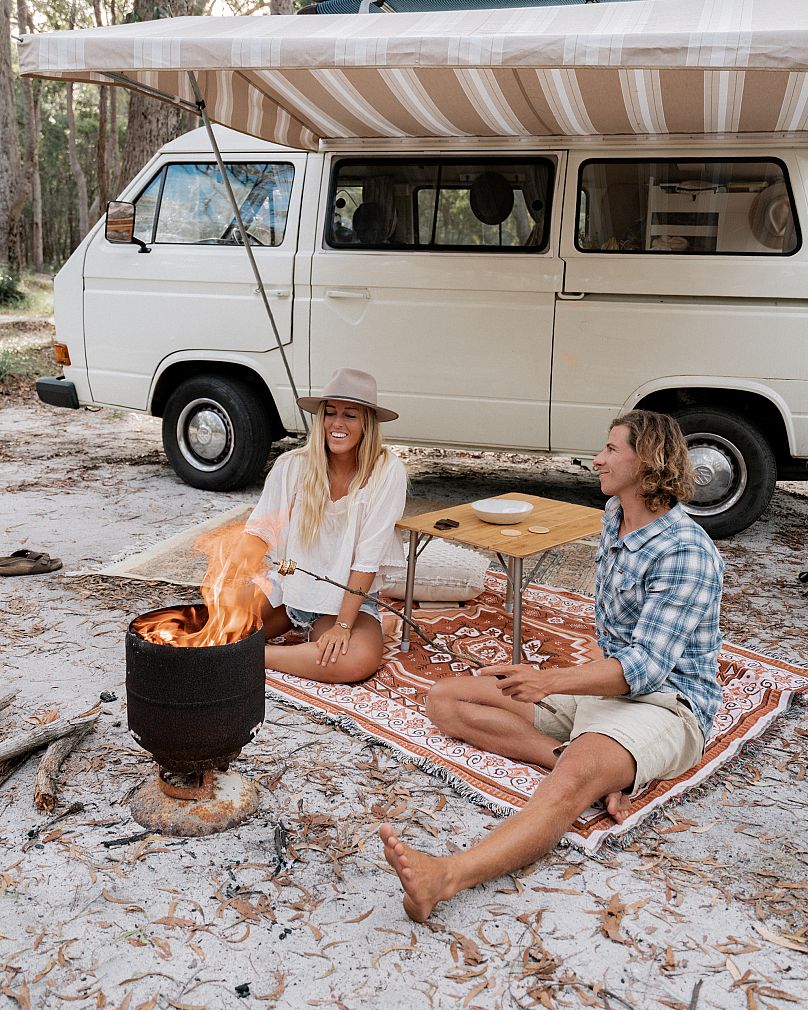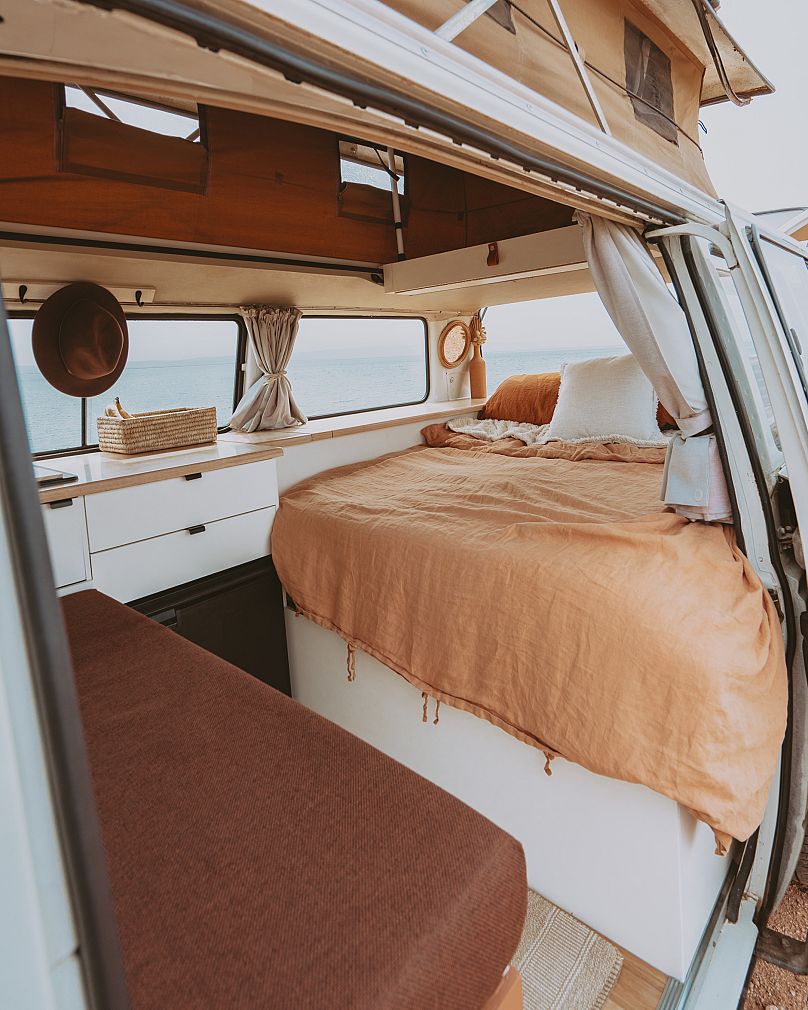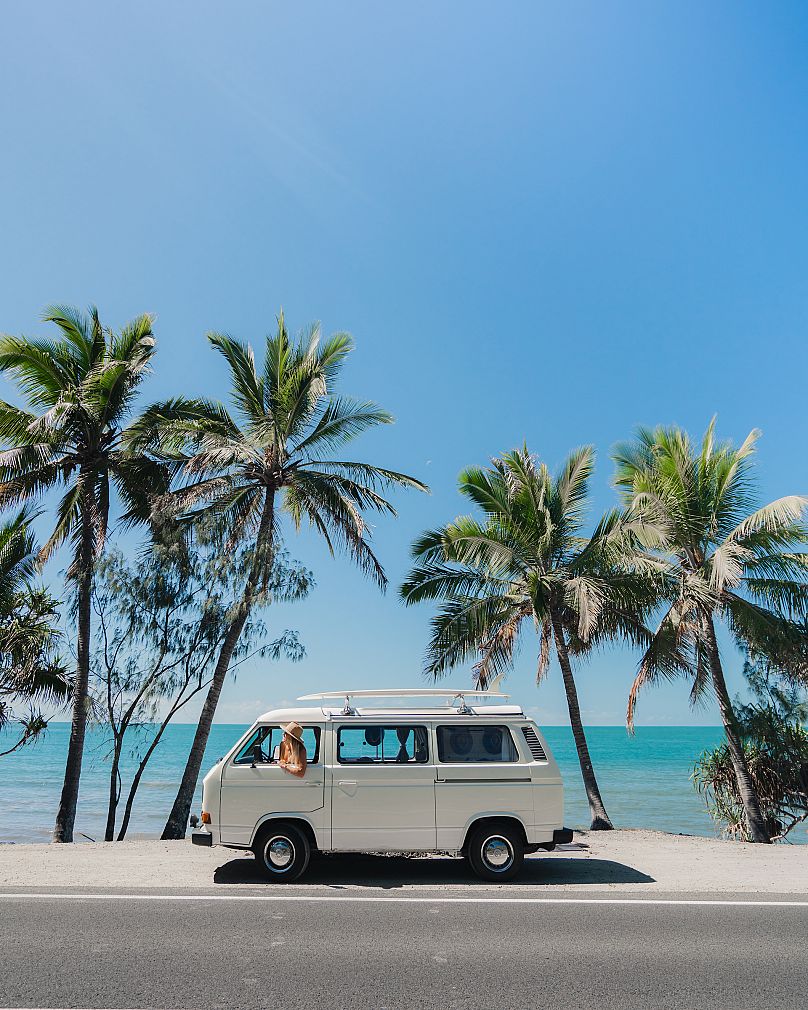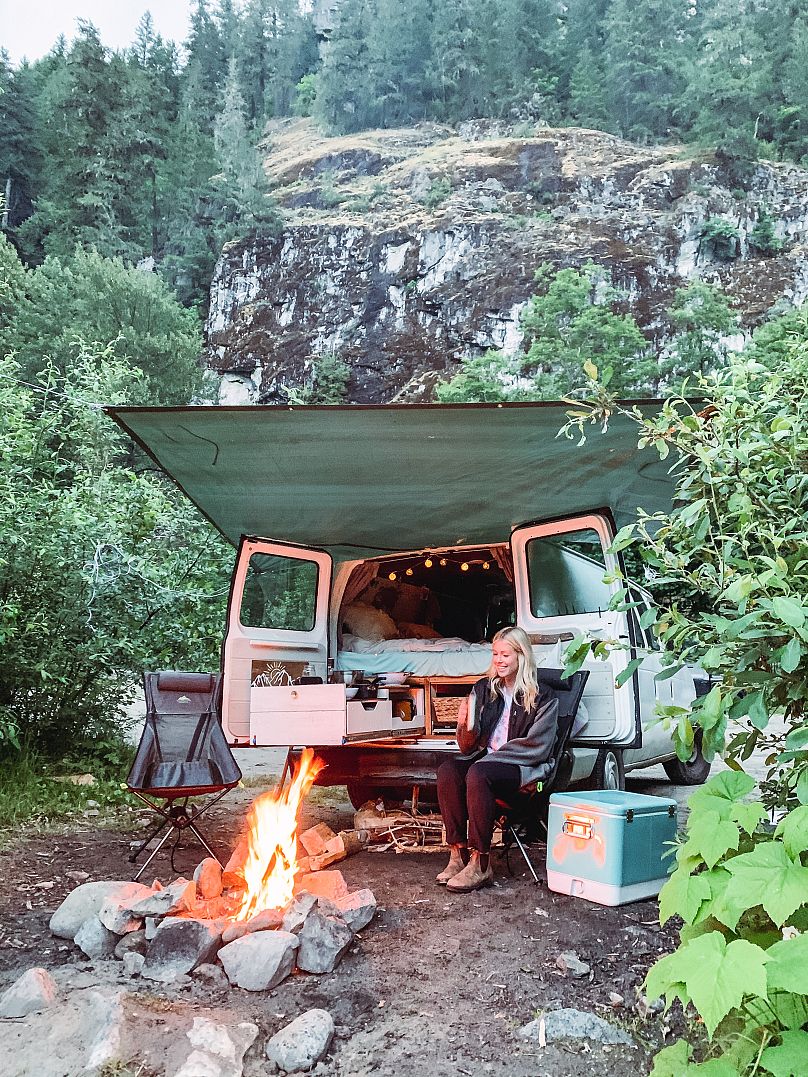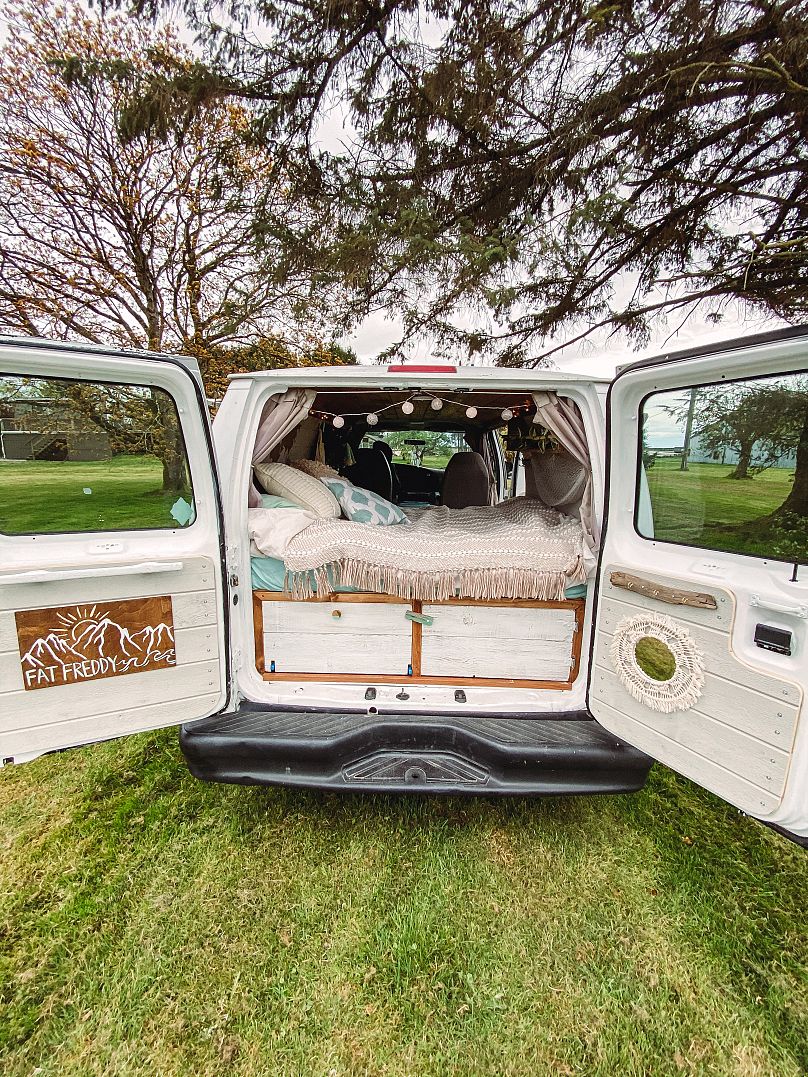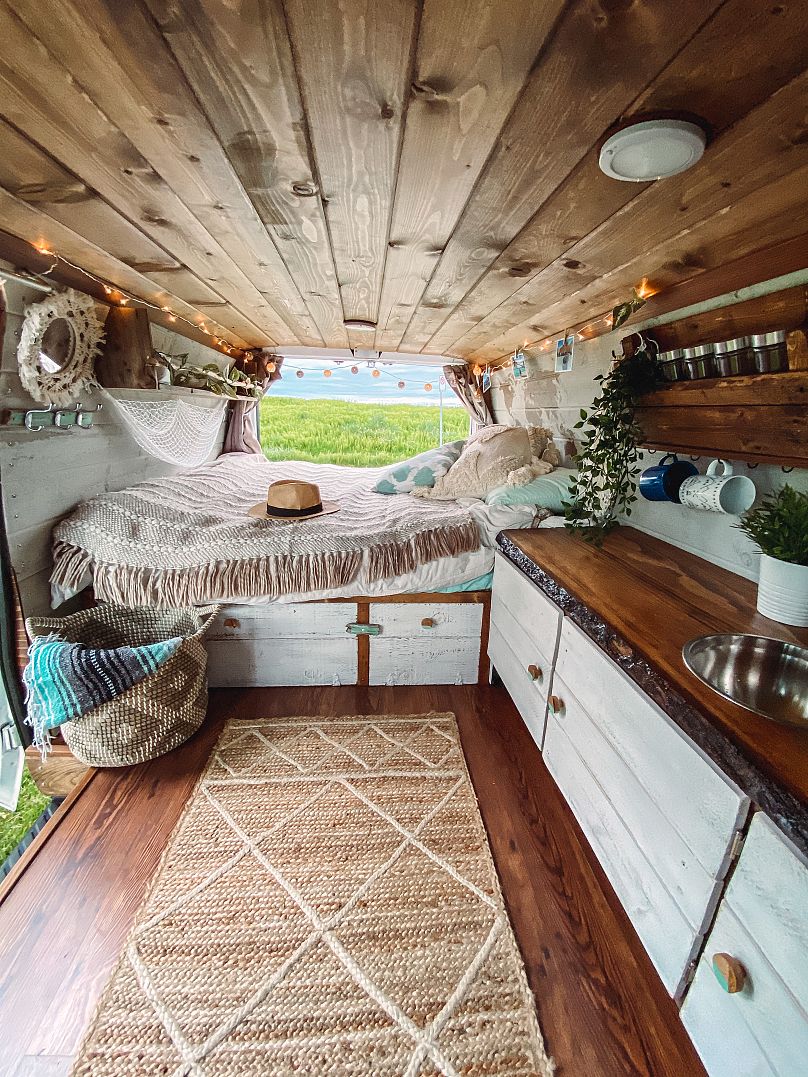We asked experienced vanlifers for the advice they wish they'd been given before converting their vans for life on the road.
Hitting the road in a campervan brings with it a sense of freedom and endless possibilities. Many vanlifers say they'll never return to cramped flights or transport timetables dictating where they go next. But since you'll be spending a lot of your days and nights in your van, it's crucial that it feels comfortable, cosy and safe to travel around in. Converting a vintage vehicle adds another layer of complexity.
So read on for tips from vanlifers who have been there and done that as they give you their design tips.
1. Benefit from the experience of others
Glenn Ferguson travels around Australia with his girlfriend Kendall Baggerley.
The couple has remodelled their 1983 Volkswagen T3 van twice. They tested its initial design on the road for a few months before creating another even better version.
Among the many changes executed was swapping out the convertible bed for a usual one, which helped to simplify the daily routine and increase the under-bed storage capacities. The storage was equally improved around the van, notably in the kitchenette section.
Glenn says that before you start your conversion project, you should do lots of research, "use social media and YouTube to learn everything you can about your specific vehicle. There are so many clever little ways to make the most of the van space".
2. Give yourself more time than you think you'll need to complete the conversion
Glenn says it’s essential to give yourself as much time as possible for the build, "It will always take so much longer than you think so make sure you aren’t rushed. The worst thing that you can do is put pressure on yourself and rush the build.”
3. Invest in good quality equipment
Invest in the best quality appliances that you can afford. The last thing you want to do is to have to end your dream trip because you have to head home to have something repaired or replaced.
4. Things will go wrong - and that's OK
“Your travels won’t always be perfect, plans will almost always change, and the weather can turn at any point. Living on the road is never monotonous, it has high highs, and can also bring low lows. It’s either awesome or challenging," Glenn says. “You just have to learn to roll with it, stay positive, and enjoy the good times when they come.”
Alyssa Swenson and Clayton Billett are a couple from Canada.
They met a couple of years ago and bonded over their love for the outdoors and adventure. Just months after meeting, they backpacked through Central America. Once they returned home, inspired by the laid-back lifestyle, they started looking online for used vans and eventually got the perfect one for them.
"It was my dream to get a van one day and it kind of just happened. We started converting it at my parents' farm, where we had a lot of space to work on it," Alyssa recollects.
The couple watched many YouTube videos, and with lots of trial and error got it all done in about 4 months. Their converted 2002 Ford Econoline is now named Fat Freddy.
Since then, Alyssa and Clayton have been travelling on their doorstep in British Columbia, and say they have fallen in love with it more and more every day.
"We didn’t realise there was so much to see just in our footsteps and the van really makes it easy to explore," they say.
The couple planned for the van to be their home year-round; they needed it to be functional, comfortable and fun to live in.
Read on for the best tips they learned from converting and testing Fat Freddy on the road.
5. Maximise storage and organise your space
Think through everything you want to take with you on the road, then decide how and where to store it.
The space under the bed is great for large items that you won't need to use very often. For everything else, hang it on the wall using shelves, baskets, mesh bags and anything else you can hang, Alyssa says.
Make sure things are easily accessible so you don't need to pack and unpack at every stop. You'll thank yourself later.
6. Tie everything down
In their van, Alyssa and Clayton use double-sided hook-and-loop fasteners, "They can keep your plants, baskets and decor secure even if the road gets bumpy. Use locking slide drawers or cupboards that will stay shut even as you drive up a hill. Nobody wants their underwear flying around the van."
7. Keep warm
Alyssa advises taking the van’s insulation very seriously, “It traps warm or cold air in your living space”, she explains. The couple used foam board insulation for the floor and roof. Then they spray foamed the walls to make sure any small gaps were filled. They also stuffed the walls and doors with wool insulation.
8. Pick a theme and stick with it
For Alyssa and Clayton designing the decor was the best part of the process of creating their home on wheels: "A lot of inspiration in your van decoration will come from the theme you pick. But there are a few rules that apply to any design."
Use light colours to make the van seem more spacious. Using old wood, pallets, and driftwood will give your van a more unique and rustic finish. “Most of the wood in our van is reclaimed, which is a big money saver," Alyssa says. “We made one shelf out of an old pallet we found in the garbage".
Are you converting a campervan? Do you have some tips or want to share your experience? Let us know over on Instagram.












